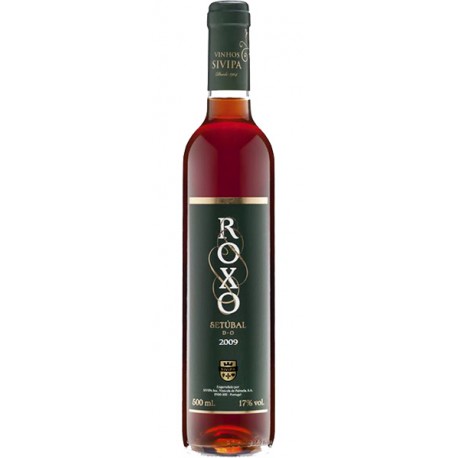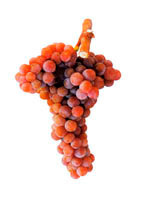 View larger
View larger
Moscatel Roxo Doc, 2010
SVM03
New product
Topaz-colored wine, with reddish reflections, limpid and crystalline.
On the nose it has an extraordinary power with dominant aromas of figs, honey and lime. The palate is powerful buttery and balanced.
Packaging: 500 ml bottle
More info
Moscatel Roxo - 2010
This fortified wine possesses an aroma that is drier and more complex than the Moscatel de Setúbal, but no lesser in richness.
In taste it exceeds the expectations created by the the aroma, exhibiting a fine palate which protrudes spices, "ginja" cherry and fig jam flavors.
Varieties: Moscatel Roxo
Soil/Terroir: Clay and limestone
Average Age of Vines: 8 years
WINEMAKING
Prepared in deposits were grapes undergo a slight fermentation, and then added vinous spirit in order to block it. Maceration lasts about 4 months
AGEING: 6 months minimum in casks
ANALYSIS
Alcohol content: 17 % VOL
Total acidity: 4 g/l
Total sugar: 195 g/l
SERVING SUGGESTIONS: Serve at 8 ºC to 16ºC
Visual Appearance: . Topaz-colored wine, with reddish reflections, limpid and crystalline.
Appearance olfactory: On the nose it has an extraordinary power with dominant aromas of figs, honey and lime.
Appearance taste: The palate is powerful buttery and balanced.
Enologist recommendations: Ideal as appetizer, dessert wine, or with cheese.
Awards
- Excellency – Paixão pelo Vinho
- Wise Buy – Paixão pelo Vinho
- Silver Vinalies Internationales 2014
- Silver Challenge International du Vin, Bordeaux
- Silver Sommelier Wine Awards 2014
- Bronze VI Grande Mostra de Vinhos de Portugal; Albufeira
- Gold Muscats du Monde, 2013
- Gold - Concurso CVRPS, 2010
- Excellence - Hong kong Citadelles du Vin, 2010
- Gold - Challenge International du Vin, 2010
The Grapes
 Moscatel Roxo
Moscatel Roxo
The home of the Moscatel Roxo (roxo means purple in Portuguese) grape varietal is the Setubal Peninsula.
Its clusters are small and compact with round, pinkish berries that have an extreme sweetness.
This grape varietal, like the Moscatel de Setubal, has a rich aromatic profile and contributes unequivocally to the aroma and flavor of the wine it produces.
Compared to the wines of the Moscatel de Setubal grape variety, this fortified wine has a more dry and complex aroma but no less rich.
pon tasting, it exceeds expectations created by the aroma palate, displaying a very fine highlight of spices, cherries and fig compote.
The Moscatel Roxo typically has a smaller production than the Moscatel, hence it is lesser known but no less appreciated.
Setubal Region
The Setubal Peninsula is a unique region, whose wines are as generous and balanced as the region that sees them born.
Mother Nature was magnanimous and refined: from with the two peninsulas, “drawn” by the two largest estuaries in Portugal, was born a region rich in biodiversity and fish and shellfish with both natural and protected areas.
The framing by the Atlantic Ocean and the Tagus and Sado River estuaries, combined with a deep Mediterranean influence and geological formation provide a unique set of characteristics for wine production.
The Setubal Peninsula also has one of the oldest denominations in Portugal - the region of Moscatel de Setubal, whose demarcation was begun in 1907 and completed and confirmed in 1908.
The Setúbal DO (Denomination of Origin) region is geographically bounded by the municipalities of Setúbal, Palmela, Montijo and the village of Castelo in the municipality of Sesimbra.
This "terroir", which is the cradle of the Moscatel de Setubal is unique: the joint annual rainfall of 550-750 milliliters and the 2,200 hours of sunshine poured over the sandy and clay – limestone soils is all seasoned with a handful of Atlantic breeze.





